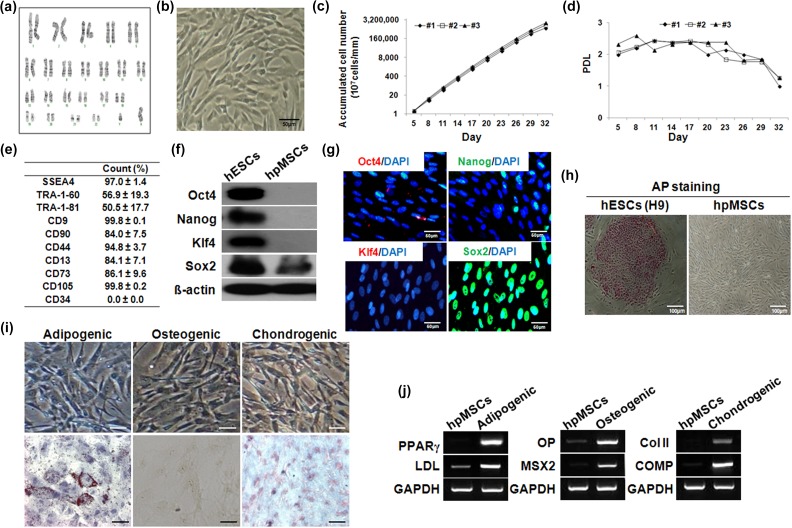Figure 1.
Characterization and maintenance of hpMSCs from human term placenta. (a) Karyotyping of hpMSCs. (b) Morphology of hpMSCs. (c) Growth curves of the hpMSCs. (d) PDL of hpMSCs. (e) FACS analysis of the immunophenotypic surface profile of hpMSCs. The hpMSCs were negative for CD34 (hematopoietic and endothelial cell markers) and positive for SSEA4, TRA-1-60, and TRA-1-81 (ES markers) and for CD9 and CD44, CD13, and CD90 (MSC markers). (f, g) The protein levels of stem cell makers such as OCT4, NANOG, KLF4, and SOX2 were measured by immunoblotting and immunostaining. (h) Alkaline phosphatase staining. The scale bar indicates a length of 100 μm. (i, j) Differentiation potential of hpMSCs. The following staining methods were employed; Oil Red O staining for adipogenic differentiation, Von Kossa staining for osteogenic differentiation, and Alcian blue staining for chondrogenic differentiation. The mRNA level of PPARγ and LDL were expressed for adipogenic differentiation and OP and MSX2 were expressed for osteogenic differentiation, and Col II and COMP were expressed for chondrogenic differentiation. The scale bar indicates a length 50 μm. Col II: type II collagen; COMP: Cartilage Oligomeric Matrix Protein; FACS: fluorescent-activated cell sorting; hpMSC: human placenta mesenchymal stem cell; LDL: lipoprotein lipase; OP: osteopontin; PDL: population doubling level; PPARγ: peroxisome proliferator-activated receptor-gamma.

